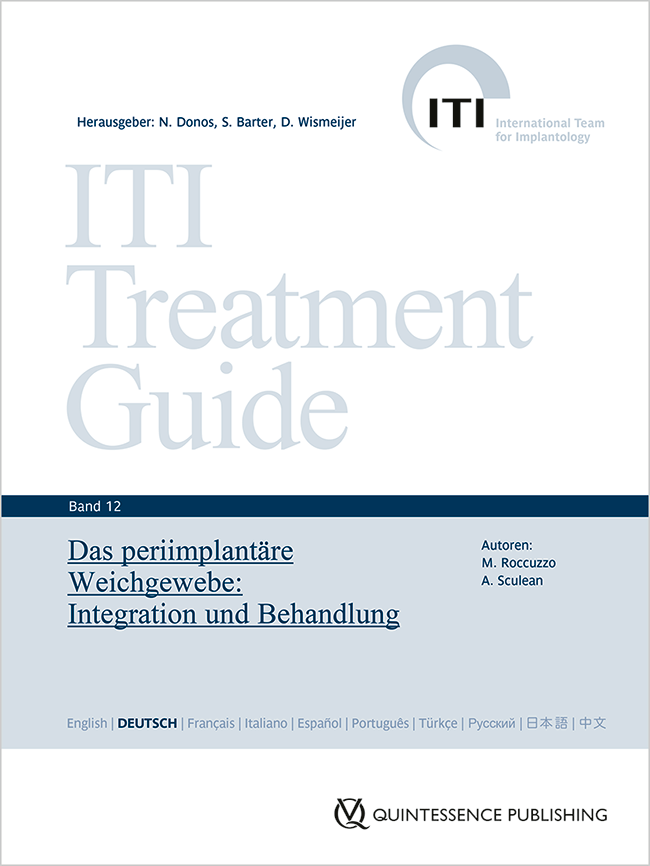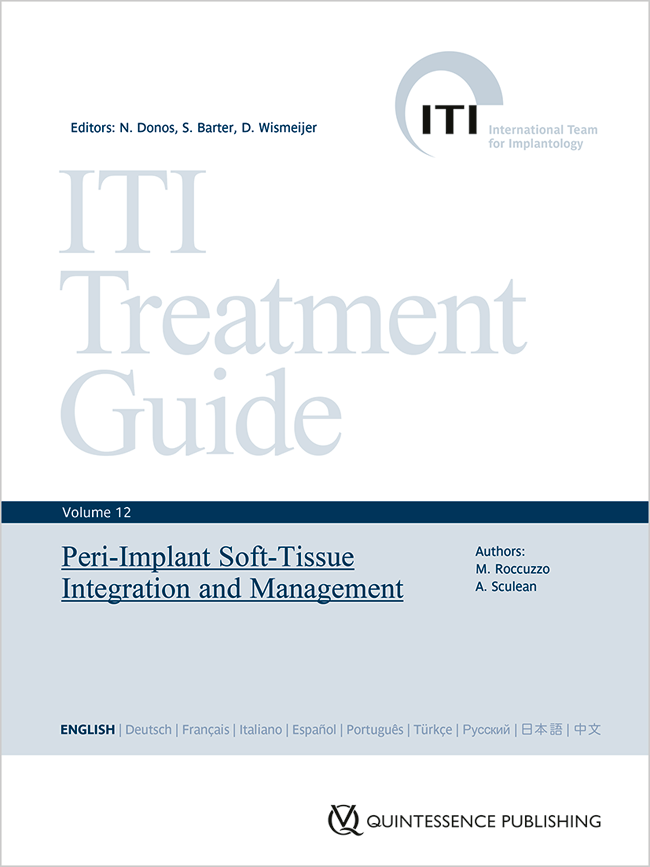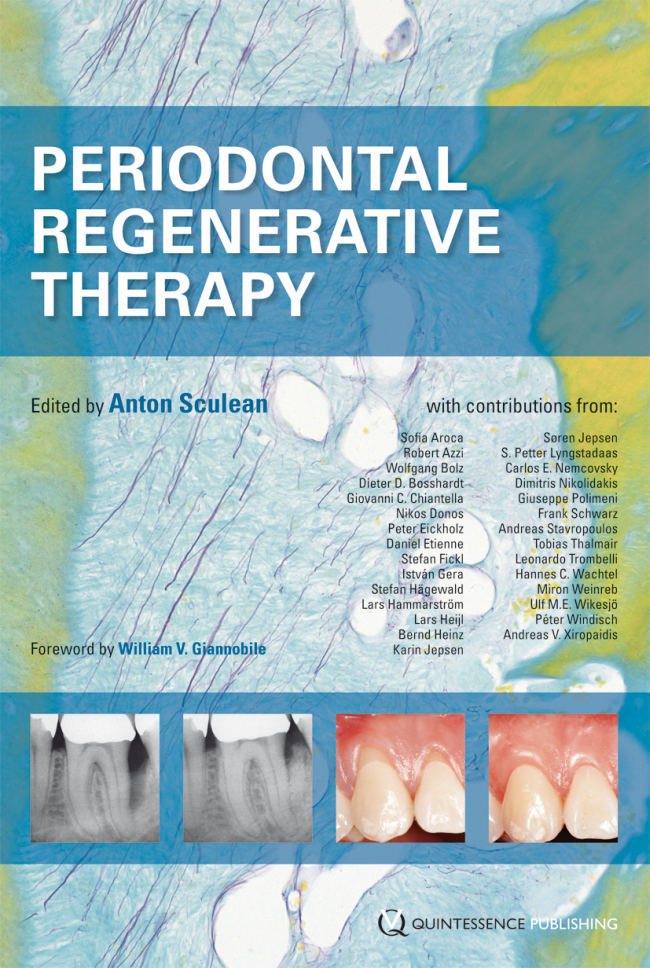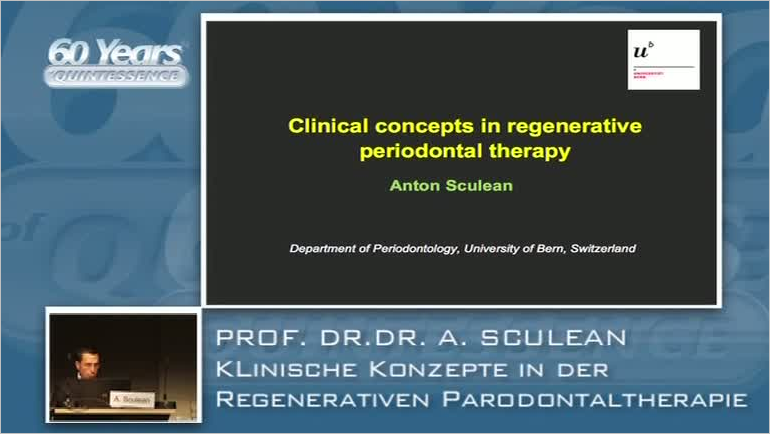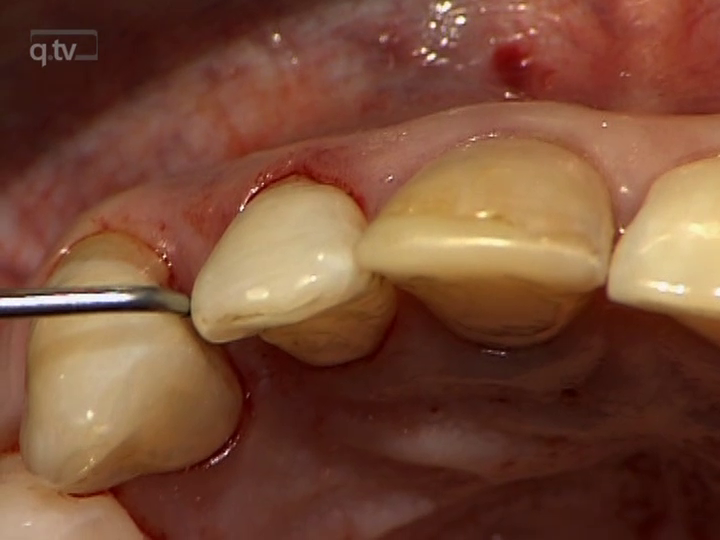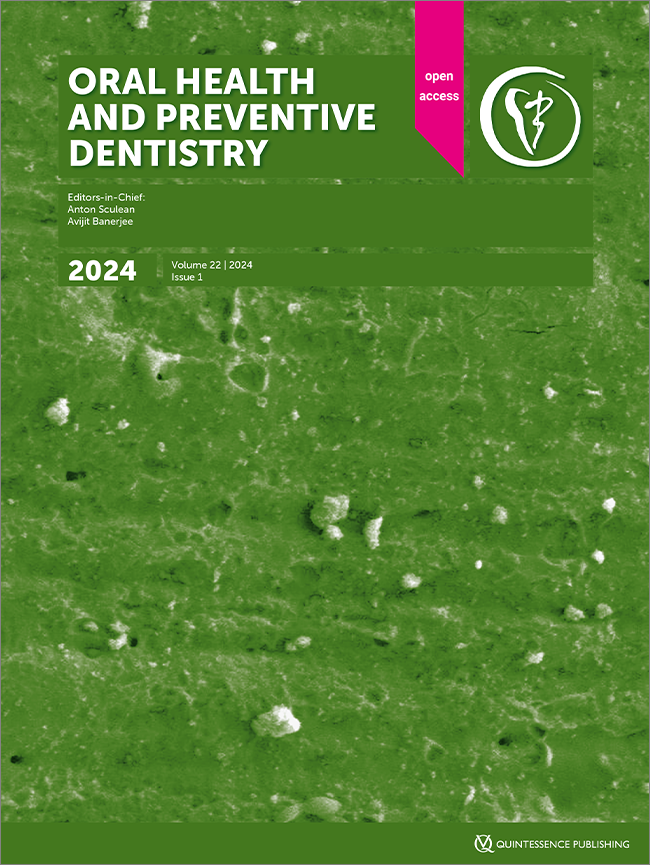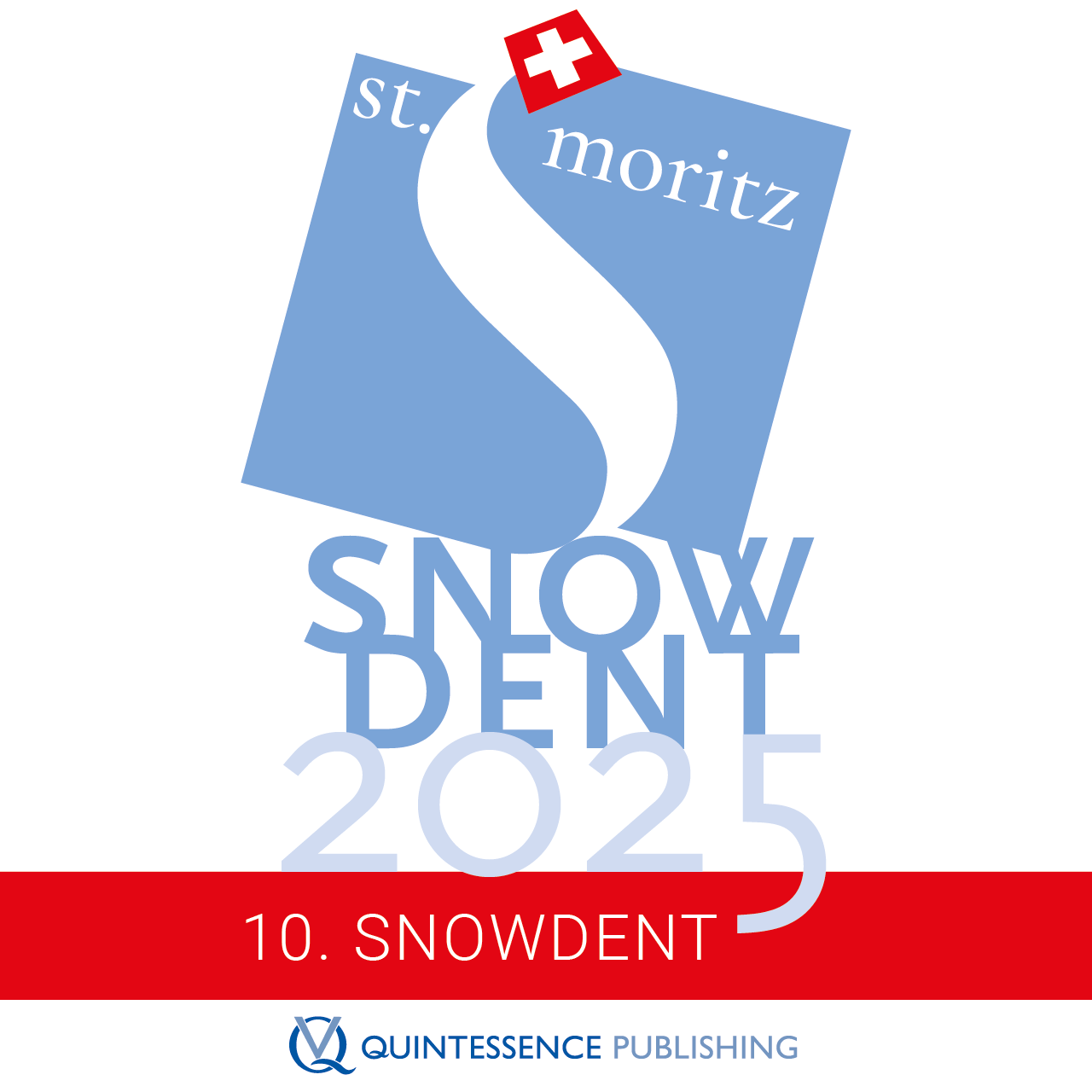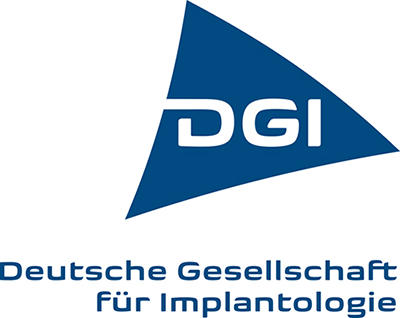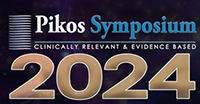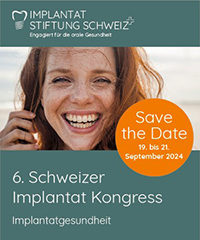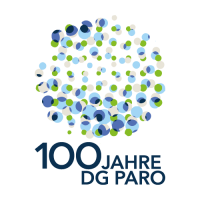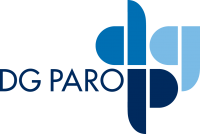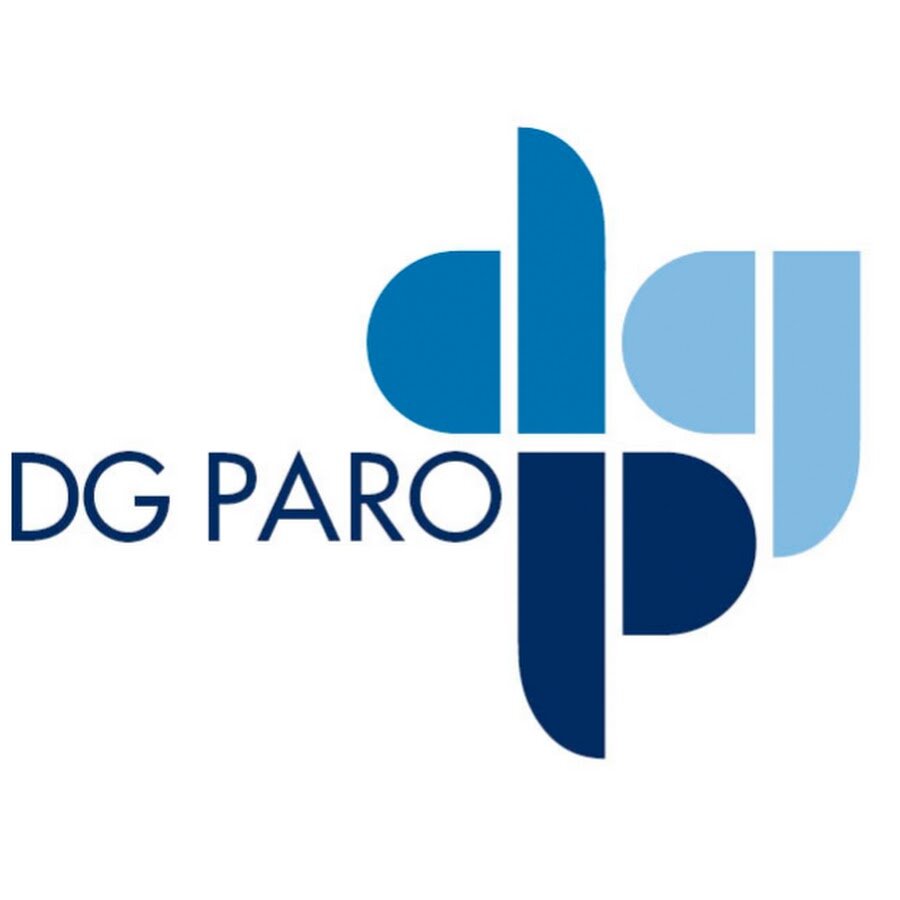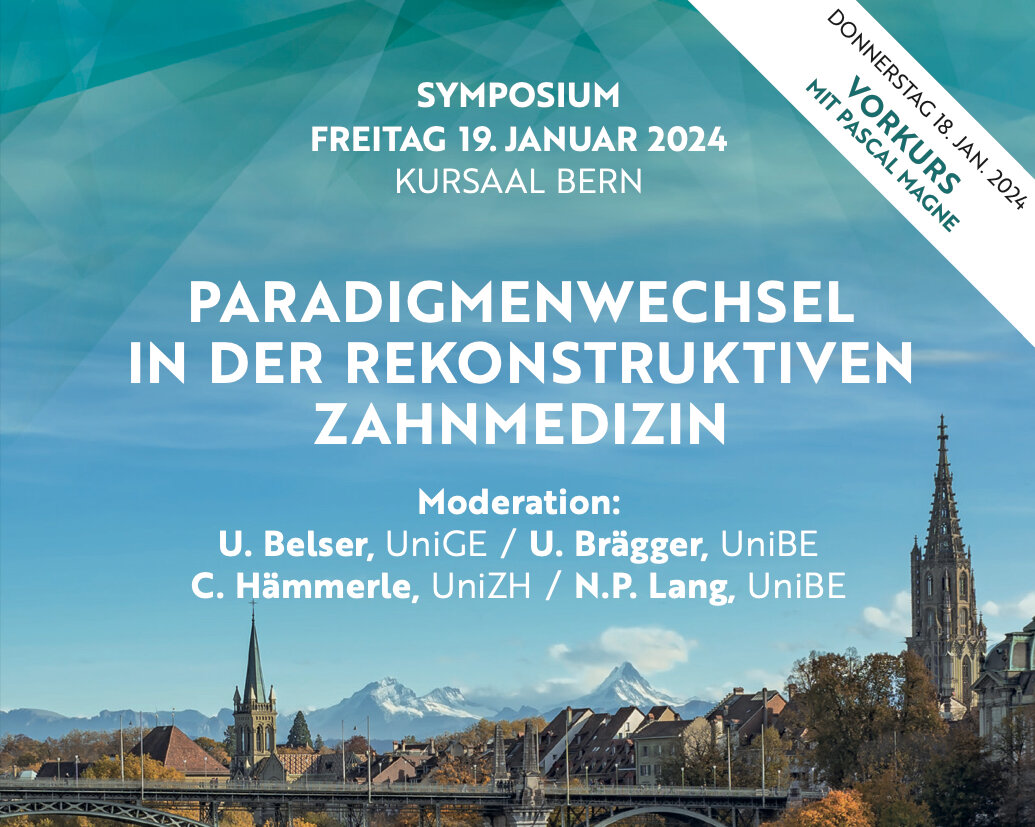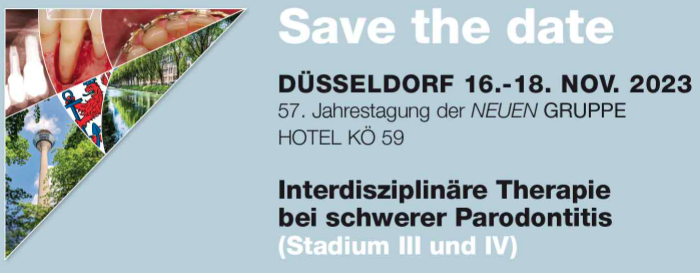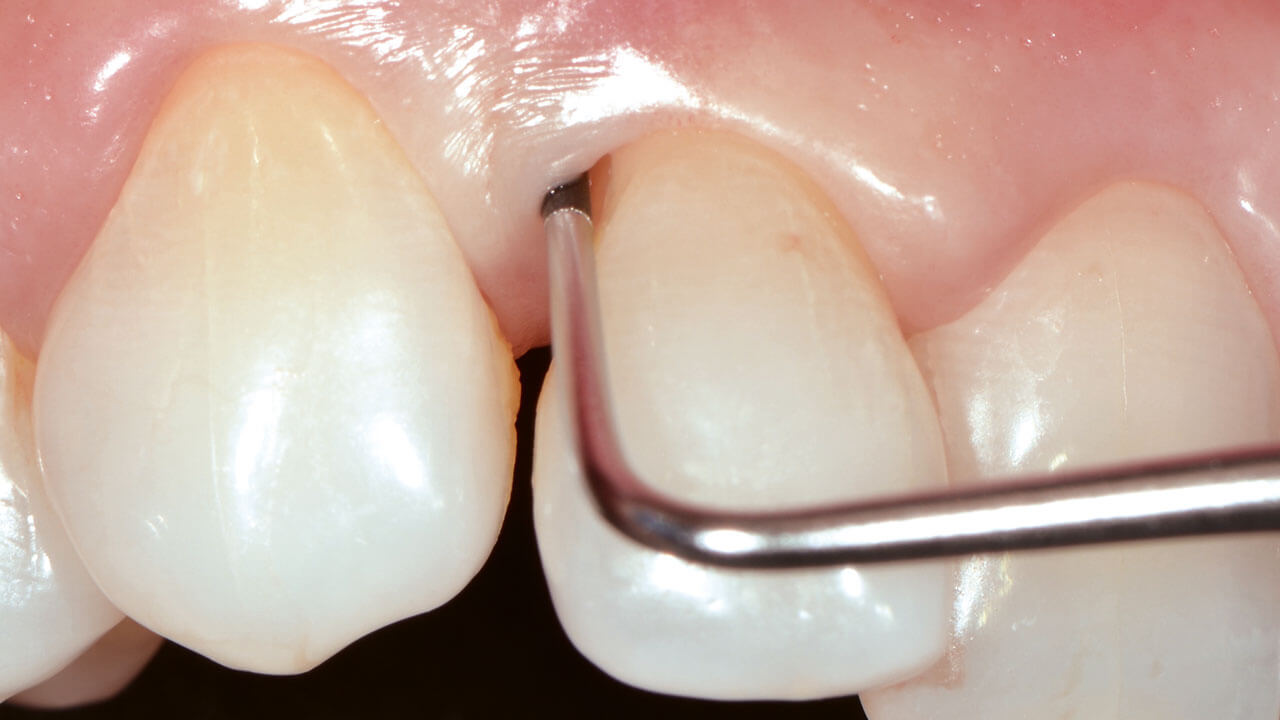International Journal of Periodontics & Restorative Dentistry, 4/2024
DOI: 10.11607/prd.6626, ID de PubMed (PMID): 37819849Páginas 434-443, Idioma: InglésFonseca, Manrique / Molinero-Mourelle, Pedro / Dönmez, Mustafa Borga / Abou-Ayash, Samir / Buser, Daniel / Sculean, Anton / Yilmaz, BurakDental implants are commonly used to replace missing single teeth. However, esthetic rehabilitation of an adjacent tooth may also be required due to diastemas, crowding, or existing large direct restorations to improve the final esthetic outcome. With the advancements in ceramics and bonding techniques, minimally invasive esthetic approaches have become viable for compromised spacing issues. This case report describes a dental technique for the esthetic rehabilitation of compromised anterior spacing with a customized zirconia implant abutment at a maxillary central incisor site and a partial ceramic veneer bonded to the adjacent central incisor.
Palabras clave: Anterior spacing; case report; implants; partial laminate veneer; prosthetic dentistry
Implantologie, 2/2024
Páginas 175-189, Idioma: AlemánStähli, Alexandra / Schmid, Jan Luca / Sculean, AntonDie vorliegende Arbeit untersucht die Implantatversorgung bei Patienten mit Parodontitis im Stadium IV auf der Grundlage der neuesten Klassifikationen und Langzeitergebnisse. Parodontitis, eine chronische bakteriell induzierte Entzündung, führt zu signifikantem Gewebeverlust und beeinträchtigt die Stabilität von Implantaten, wobei die Entzündung zunächst als Mukositis ohne Knochenverlust beginnt und im weiteren Verlauf zu einer Periimplantitis führen kann. Die Inzidenz von Periimplantitis ist bei parodontal vorgeschädigten Patienten erhöht und trotz ähnlicher Überlebensraten von Implantaten nach 5 und 10 Jahren weisen diese Patienten signifikant größere Sondierungstiefen und Knochenverluste auf. Diese Arbeit unterstreicht die Notwendigkeit eines adäquaten präventiven und therapeutischen Ansatzes, einschließlich der Planung der Implantatposition und des Weichgewebemanagements sowie der Einbindung in eine regelmäßige Erhaltungstherapie, um langfristig erfolgreiche Ergebnisse zu sichern. Diese Konzepte werden abschließend anhand eines Patientenbeispiels erläutert.
Palabras clave: Parodontitis im Stadium IV, Zahnimplantate, unterstützende Parodontalbehandlung
Oral Health and Preventive Dentistry, 1/2024
Acceso libre Sólo en líneaPeriodontologyDOI: 10.3290/j.ohpd.b5281925, ID de PubMed (PMID): 3868702930. abr 2024,Páginas 171-180, Idioma: InglésRamanauskaite, Egle / Machiulskiene Visockiene, Vita / Shirakata, Yoshinori / Friedmann, Anton / Pereckaite, Laura / Balciunaite, Ausra / Dvyliene, Urte Marija / Vitkauskiene, Astra / Baseviciene, Nomeda / Sculean, AntonPurpose: To investigate the microbiological outcomes obtained with either subgingival debridement (SD) in conjunction with a gel containing sodium hypochlorite and amino acids followed by subsequent application of a cross-linked hyaluronic acid gel (xHyA) gel, or with SD alone.
Materials and Methods: Forty-eight patients diagnosed with stages II-III (grades A/B) generalised periodontitis were randomly treated with either SD (control) or SD plus adjunctive sodium hypochlorite/amino acids and xHyA gel (test). Subgingival plaque samples were collected from the deepest site per quadrant in each patient at baseline and after 3 and 6 months. Pooled sample analysis was performed using a multiplex polymerase chain reaction (PCR)-based method for the identification of detection frequencies and changes in numbers of the following bacteria: Aggregatibacter actinomycetemcomitans (A.a), Porphyromonas gingivalis (P.g), Tannerella forsythia (T.f), Treponema denticola (T.d), and Prevotella intermedia (P.i).
Results: In terms of detection frequency, in the test group, statistically significant reductions were found for P.g, T.f, T.d and P.i (p < 0.05) after 6 months. In the control group, the detection frequencies of all investigated bacterial species at 6 months were comparable to the baseline values (p > 0.05). The comparison of the test and control groups revealed statistically significant differences in detection frequency for P.g (p = 0.034), T.d (p < 0.01) and P.i (p = 0.02) after 6 months, favouring the test group. Regarding reduction in detection frequency scores, at 6 months, statistically significant differences in favour of the test group were observed for all investigated bacterial species: A.a (p = 0.028), P.g (p = 0.028), T.f (p = 0.004), T.d (p <0.001), and P.i (p = 0.003).
Conclusions: The present microbiological results, which are related to short-term outcomes up to 6 months post-treatment, support the adjunctive subgingival application of sodium hypochlorite/amino acids and xHyA to subgingival debridement in the treatment of periodontitis.
Palabras clave: cross-linked hyaluronic acid, microbiology, non-surgical periodontal therapy, periodontitis, periopathogenic bacteria, sodium hypochlorite/amino acids
Oral Health and Preventive Dentistry, 1/2024
Acceso libre Sólo en líneaOral HealthDOI: 10.3290/j.ohpd.b4997035, ID de PubMed (PMID): 3837643520. feb 2024,Páginas 115-122, Idioma: InglésWolf, Thomas Gerhard / Dianišková, Simona / Cavallé, Edoardo / Aliyeva, Rena / Cagetti, Maria-Grazia / Campus, Guglielmo / Deschner, James / Forna, Norina / Ilhan, Duygu / Mazevet, Marco / Lella, Anna / Melo, Paulo / Perlea, Paula / Rovera, Angela / Sculean, Anton / Sharkov, Nikolai / Slutsky, Ariel / Torres, António Roma / Saag, MarePurpose: Dental students learn knowledge and practical skills to provide oral health care to the population. Practical skills must be maintained or continuously developed throughout a professional career. This cross-sectional survey aimed to evaluate the perception of practical skills of dental students and dental-school graduates by national dental associations (NDAs) in international comparison in the European Regional Organization of the FDI World Dental Federation (ERO-FDI) zone.
Materials and Methods: A questionnaire of 14 items collected information on pre-/postgraduate areas.
Results: A total of 25 countries participated (response rate: 69.4%), with 80.0% having minimum requirements for practical skills acquisition and 64.0% starting practical training in the 3rd year of study. In countries where clinical practical work on patients begins in the 2nd year of study, practical skills of graduates are perceived as average, starting in the 3rd year of study as mainly good, starting in the 4th as varying widely from poor to very good. In total, 76.0% of respondents feel that improvements are needed before entering dental practice. Improvements could be reached by treating more patients in dental school (32.0%), increasing the quantity of clinical training (20.0%), or having more clinical instructors (12.0%). In 56.0% of the countries, it is possible to open one’s own dental practice immediately after graduation, and in 16.0%, prior vocational training is mandatory.
Conclusions: All participating countries in the ERO-FDI zone reported practical training in dental school, most starting in the 3rd year of study. The perception of practical skills of dental students and dental-school graduates among NDAs is very heterogeneous. Reasons for the perceived deficiencies should be further explored.
Palabras clave: dental association, graduate, international, practical skills, student
Oral Health and Preventive Dentistry, 1/2024
Acceso libre Sólo en líneaPeriodontologyDOI: 10.3290/j.ohpd.b5569745, ID de PubMed (PMID): 3899478612. jul 2024,Páginas 257-270, Idioma: InglésVela, Octavia-Carolina / Boariu, Marius / Rusu, Darian / Iorio-Siciliano, Vincenzo / Sculean, Anton / Stratul, Stefan-IoanPurpose: To compare the regenerative clinical and radiographic effects of cross-linked hyaluronic acid (xHyA) with enamel matrix proteins (EMD) at six months after regenerative treatment of periodontal intrabony defects.
Materials and Methods: Sixty patients presenting one intrabony defect each were randomly assigned into control (EMD) and test (xHyA) groups. Clinical attachment level (CAL) gain was the primary outcome, while pocket probing depth (PPD), gingival recession (REC), bleeding on probing (BOP), full-mouth plaque score (FMPS), full-mouth bleeding score (FMBS), and radiographic parameters such as defect depth (BC-BD), and defect width (DW) were considered secondary outcome variables. Parameters were recorded at baseline and after 6 months.
Results: At the 6-month follow-up, 54 patients were available for statistical analysis. In the control and test groups, the mean CAL gain was statistically significant in the intragroup comparison (p < 0.001). 48.1% of test sites showed a CAL gain ≤ 2 mm compared with 33.3% of control sites. The mean PPD reduction was statistically significant in the intragroup comparison in both groups (p < 0.001). The mean REC increase was similar in the two groups: 1.04 ± 1.29 mm vs 1.11 ± 1.22 mm (test vs control). The mean BC-BD, DW, FMPS, FMBS, and BOP changed statistically significantly only in the intragroup comparison, not in the intergroup comparison.
Conclusion: Both treatments, EMD and xHyA, produced similar statistically significant clinical and radiographical improvements after six months when compared with baseline.
Palabras clave: cross-linked hyaluronic acid, enamel matrix derivative, intrabony defects, periodontal pocket, periodontal regeneration
Quintessence International, 9/2023
DOI: 10.3290/j.qi.b4171703, ID de PubMed (PMID): 37345441Páginas 712-722, Idioma: InglésKauffmann, Frederic / Fickl, Stefan / Sculean, Anton / Fischer, Kai R. / Friedmann, AntonObjective: To clinically and histologically evaluate the potential effect of a cross-linked, high molecular weight hyaluronic acid (xHyA) on the outcomes of guided bone regeneration performed with a demineralized bovine bone mineral (DBBM) covered with a natural collagen membrane.
Method and materials: Eleven patients (eight females and three males, mean age 53 years) with a total of 27 surgical sites were treated. Treatments were performed with either DBBM and natural collagen membrane fixed with tacks (group A) or DBBM mixed with xHyA and subsequently covered with natural collagen membrane (group B). Clinical evaluations were made at baseline (T1), immediately after guided bone regeneration (T2), and at the time of implant placement (T3). Additionally, at the time of implant placement, core biopsies were retrieved and submitted for histologic analysis.
Results: Healing was uneventful in all cases. At 6 months, group B revealed a statistically significantly higher crestal ridge dimension compared to group A (P = .007). The histologic analysis revealed a tendency for greater mineralized tissue formation in group B compared to group A (67.5% versus 41.6%) and contained a higher amount of new bone (37.2%) and less DBBM residues (20.9%) than group A (12.8% new bone and 28.8% DBBM residues, respectively).
Conclusions: Within their limits, the present data indicate that, during guided bone regeneration with natural collagen membrane, the combination of DBBM and xHyA may improve the quality and quantity of bone formed with DBBM alone.
Palabras clave: bone defect, bone grafting, bovine bone–derived mineral, cross-linked hyaluronic acid, graft fixation, graft stability, guided bone regeneration, histomorphometry, resorbable membrane
Quintessence International, 8/2023
DOI: 10.3290/j.qi.b4007601, ID de PubMed (PMID): 37010441Páginas 622-628, Idioma: InglésChackartchi, Tali / Imber, Jean-Claude / Stähli, Alexandra / Bosshardt, Dieter / Sacks, Hagit / Nagy, Katalin / Sculean, AntonObjective: To histologically evaluate the effects of a novel human recombinant amelogenin (rAmelX) on periodontal wound healing/regeneration in intrabony defects.
Method and materials: Intrabony defects were surgically created in the mandible of three minipigs. Twelve defects were randomly treated with either rAmelX and carrier (test group) or with the carrier only (control group). At 3 months following reconstructive surgery, the animals were euthanized, and the tissues histologically processed. Thereafter, descriptive histology, histometry, and statistical analyses were performed.
Results: Postoperative clinical healing was uneventful. At the defect level, no adverse reactions (eg, suppuration, abscess formation, unusual inflammatory reaction) were observed with a good biocompatibility of the tested products. The test group yielded higher values for new cementum formation (4.81 ± 1.17 mm) compared to the control group (4.39 ± 1.71 mm) without reaching statistical significance (P = .937). Moreover, regrowth of new bone was greater in the test compared to the control group (3.51 mm and 2.97 mm, respectively, P = .309).
Conclusions: The present results provided for the first-time histologic evidence for periodontal regeneration following the use of rAmelX in intrabony defects, thus pointing to the potential of this novel recombinant amelogenin as a possible alternative to regenerative materials from animal origins.
Palabras clave: amelogenin, enamel matrix derivative, intrabony defects, periodontal regeneration, recombinant, wound healing
Quintessence International, 5/2023
DOI: 10.3290/j.qi.b3824933, ID de PubMed (PMID): 36661359Páginas 384-392, Idioma: InglésRoccuzzo, Andrea / Ettmayer, Johanna / De Ry, Siro Pietro / Imber, Jean-Claude / Sculean, Anton / Salvi, Giovanni EdoardoObjectives: To assess the association between the baseline radiographic defect angle and the long-term clinical outcomes following periodontal regenerative therapy with enamel matrix derivative (EMD).
Method and materials: Baseline periapical radiographs obtained from a cohort of patients treated with periodontal regenerative therapy were digitized and the radiographic angle width between the root surface and the bony wall of the adjacent intraosseous defect was calculated and reported (in degrees). Changes in pocket probing depth (PD) and clinical attachment level (CAL) were assessed and reported (in mm). Clinical outcomes were evaluated at baseline (T0), 6 months following therapy (T1), and at the latest follow-up (T2).
Results: Thirty-eight defects in 26 patients enrolled in supportive periodontal care for a mean period of 10.4 years (range 8.0 to 15.5 years) were available for analysis. The mean PD change between T0 and T2 was 2.33 ± 1.66 mm at teeth with a defect angle width < 20 degrees and 0.86 ± 1.66 mm at teeth with a defect angle width > 30 degrees (P = .021). When the baseline radiographic angle width was < 20 degrees the probability of obtaining a CAL gain > 3 mm was 1.5-times higher (95% CI 0.19 to 13.8) at T1 and 2.5-times higher (95% CI 0.40 to 15.6) at T2 compared with defects with a radiographic angle width > 30 degrees.
Conclusion: Within their limitations, these results indicate that pretherapeutic measurement of the radiographic defect angle width might provide relevant information on the short-/long-term clinical outcomes following regenerative periodontal therapy with EMD.
Palabras clave: enamel matrix derivative, intrabony defects, long-term results, periodontal regeneration, radiographic evaluation
International Journal of Oral Implantology, 3/2023
ID de PubMed (PMID): 37767616Páginas 211-222, Idioma: InglésRoccuzzo, Andrea / Weigel, Lucienne / Marruganti, Crystal / Imber, Jean-Claude / Ramieri, Guglielmo / Sculean, Anton / Salvi, Giovanni E / Roccuzzo, MarioPurpose: To longitudinally assess the prevalence of peri-implant health, peri-implant mucositis and peri-implantitis in a cohort of patients with and without history of periodontitis over a 20-year period.
Materials and methods: Eighty-four patients who attended a specialist private periodontal practice were evaluated prospectively 10 and 20 years after prosthesis delivery. Following successful completion of periodontal/implant therapy, patients (172 implants) were enrolled on an individualised supportive periodontal care programme. Clinical and radiographic parameters were collected to assess the prevalence of peri-implant health and diseases. Prevalence of peri-implantitis and peri-implant mucositis was calculated based on the case definition set out in 2018. A multilevel logistic regression analysis was conducted to assess potential risk or protective factors.
Results: The analysis was performed on 22 periodontally healthy and 62 periodontally compromised patients rehabilitated with 39 and 130 implants, respectively. The 10-year prevalence of peri-implant health, peri-implant mucositis and peri-implantitis was 21.4%, 67.9% and 10.6%, respectively, whereas the 20-year prevalence was 29.8%, 47.6% and 33.3%, respectively. Non-compliant periodontally compromised patients showed a statistically significantly increased risk at 20 years of both peri-implant mucositis (odds ratio 11.1; 95% confidence interval 1.8–68.6) and peri-implantitis (bone loss and probing depth) (odds ratio 14.3; 95% confidence interval 1.8–32.9). High full-mouth plaque and bleeding scores were associated with higher odds of both peri-implant mucositis and peri-implantitis.
Conclusions: Peri-implant diseases were prevalent in patients rehabilitated with dental implants and followed up for a period of 20 years. History of periodontal disease and a lack of compliance with a tailored supportive periodontal care programme were identified as risk factors for peri-implant diseases.
Palabras clave: dental implants, peri-implantitis, periodontally compromised patients, periodontitis, supportive periodontal care
The authors declare no potential conflict of interests with respect to this study. The study was self-funded; no external funding was available for this research.
Oral Health and Preventive Dentistry, 1/2023
Acceso libre Sólo en líneaPeriodontologyDOI: 10.3290/j.ohpd.b4347453, ID de PubMed (PMID): 3772489730. ago 2023,Páginas 279-284, Idioma: InglésRamanauskaite, Egle / Machiulskiene, Vita / Dvyliene, Urte Marija / Eliezer, Meizi / Sculean, AntonPurpose: The adjunctive subgingival application of sodium hypochlorite/amino acid and a mixture of natural and cross-linked hyaluronic acid gels (high molecular weight) has been recently proposed as a novel modality to enhance the outcomes of non-surgical periodontal therapy. The aim of this prospective case series was to evaluate the clinical outcomes obtained following the subgingival application of a combination of sodium hypochlorite/amino acid and a mixture of natural and cross-linked hyaluronic acid (high molecular) gels in conjunction with non-surgical periodontal therapy. Material and Methods: Twenty-one systemically healthy, non-smoking patients diagnosed with stage II-III, grade A/B periodontitis underwent full-mouth subgingival debridement (SD) performed with ultrasonic and hand instruments. All sites with probing depths (PD) ≥ 4 mm were treated with additional repeated (i.e., 2-3 times) instillation of sodium hypochlorite/amino acid gel in the periodontal pockets prior to and during SRP. Following mechanical debridement, a mixture of natural and cross-linked hyaluronic acid (high molecular) gel was applied in the pockets. The primary outcome variable was PD reduction; changes in clinical attachment level (CAL) and bleeding on probing (BOP) were the secondary outcomes. The clinical parameters were assessed at baseline, 3 and 6 months after therapy.
Results: Compared to baseline, a statistically significant mean reduction of PD values was obtained after 3 and 6 months, amounting to 2.6 ± 0.4 mm, and 2.9 ± 0.4 mm, respectively (p < 0.001). Mean CAL gain measured 2.3 ± 0.5 mm at 3 months and 2.6 ± 0.5 mm at 6 months in comparison to baseline (p < 0.001). Mean reduction of BOP values was 54.9 ± 16.9 % at 3 months and 65.6 ± 16.4 % at 6 months (p < 0.001). The number of moderate pockets (4-5 mm) decreased from 1808 at baseline to 274 at the 6-month evaluation, and the number of deep (≥ 6 mm) pockets dropped from 319 to 3, respectively.
Conclusion: The combination of sodium hypochlorite/amino acid and a mixture of natural and cross-linked hyaluronic acid (high molecular) adjunctive to subgingival debridement may represent a valuable approach to improve the outcomes of non-surgical periodontal treatment.
Palabras clave: cross-linked hyaluronic acid, non-surgical periodontal therapy, periodontitis, sodium hypochlorite/amino acid.




